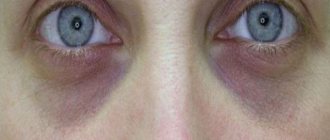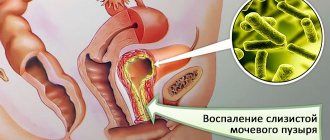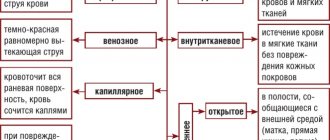There are quite a few diseases that affect the organs of the urinary system. Sand in the kidneys is not a full-fledged disease and is not included in the ICD-10 classification, but this phrase is very often mentioned in ultrasound reports and other results of examination of the genitourinary system.
The kidneys filter the blood and remove waste products from the body through urine. But due to inflammatory processes in the organs of the genitourinary system, poor water quality or prolonged use of medications, deposits are provoked on the walls of the organs. The danger with these deposits is that these sand crystals combine to form rocks.
Reasons for appearance
The basic factor for the appearance of sand in the system is a violation of the general metabolism in the systems of the human body. Due to metabolic disorders and increased salt content in the bloodstream, the formation of sediment occurs, from which stones are formed.
Basic factors:
- Predisposition of genetic type - scientists have identified the peculiarity that the metabolism is the same in close relatives. There is a possibility of stone formation in people whose close relatives suffer from this disease.
- Water composition - the concept of hard water. This solution contains a lot of calcium, phosphorus and magnesium salts. They can affect a person’s health and their urinary system.
- Hot climate with high humidity – these conditions favor the evaporation of fluid from the body in the form of sweat. This entails retention of elements in the bloodstream and increased filtration through the structural units of the renal structures.
- Unbalanced diet - the balance of micro- and macroelements is difficult to maintain at the required level. With a strong predominance of one component, urine oxidation or alkalization begins. With excessive consumption of animal proteins, the formation of alkaline sand occurs.
- Imbalance of vitamin content.
- Increased activity of the parathyroid gland leads to an increased increase in calcium salts in urine.
Kidney stones can appear due to various factors.
Pathological changes in the functioning of the urinary system - anomalies of intrauterine development, chronic types of glomerulonephritis and some other types of ailments.
These pathological conditions lead to prolonged stagnation of urine, increasing its concentration and the formation of stones.
Preventive actions
In order to avoid problems with the excretory organs, everyone who cares about their health should give up bad habits, normalize their diet, and give preference to a healthy lifestyle.
It is necessary to monitor your weight, because obesity is a prerequisite for the occurrence of pathologies of the urinary system.
When cooking, try to use water that does not contain many minerals. It is better to use filtered water. It is imperative to observe the drinking regime. The menu should be dominated by natural juices and fruit drinks made from fresh or frozen berries. Particularly beneficial are cranberries and lingonberries, which stimulate an increase in the pH level of urine.
Symptoms
There are no symptoms of sand manifestations in the renal structures or in the urinary tract. Fine sand fractions do not affect the process of fluid removal.
As soon as they begin to increase in size, renal colic occurs. When the stones begin to move through the ducts, the process is accompanied by severe pain.
Pain in the urinary tract
Under possible conditions suitable for the advancement of stones and sand, the mucous membranes lining the ureters and urethral canal are damaged. At the beginning of the process, the following symptoms will appear:
- a strong burning sensation in the perineum;
- pain during urination;
- presence of blood in urine;
- pain in the urinary tract.
When a significant portion of the formed crystals begin to leave the urinary system, relief occurs. Signs characteristic of the disease disappear, and the patient’s quality of life returns to normal.
Without proper and adequate drug treatment, sand can form in the kidneys and ureters again after a certain period of time. The process of formation of new stones can vary from one to several years.
Diagnosis of the disease
It must be noted that formations in the renal structures of stones in the form of sand in both male and female representatives cannot be detected first using ultrasound, as well as using urography and scintigraphy. The size of the suspensions is negligible and impossible to visualize.
Diagnosis of the disease is carried out using ultrasound examination
The presence of sand can be detected using special laboratory tests. The following indicators may indicate the presence of sand in the kidneys:
- erythrocytosis - the presence of more than 2 in the field of view in urine. An increase in the content of blood cells indicates possible damage to the mucous walls of the urinary tract, pelvis, or the urethral canal itself.
- hyaline cylinders;
- urates;
- oxalates;
- tripelphosphates.
All components above from the list should not be in a normal urine test. Their appearance indicates the presence of stones in the kidneys.
Kidney cleanse
An important part of complex therapy. This treatment should be carried out by those who have confirmation in tests regarding the content of mineral compounds in urine. This treatment is most relevant in the presence of severe symptoms.
Kidney cleansing is an important part of therapy
Removing sand from the kidneys is much simpler and easier than removing already formed and formed stones. It is possible to completely remove sand after 10 days. The small size of sand fractions allows you to easily leave the pelvis and ureters without damaging the walls and structural units of the urinary system.
Why is this condition dangerous?
Microlithiasis is a stage of kidney stone disease that can be cured. Without therapy, over time, the protein-crystalline suspension becomes denser, forming stones. Delayed treatment provokes the following consequences:
- acute pyelonephritis;
- urolithiasis disease;
- acute urinary retention;
- hypertrophic cystitis;
- urethritis;
- purulent inflammation.
Sand causes kidney dysfunction, which is reflected in a decrease in filtering capacity. This condition is dangerous due to sluggish renal failure.
Activity mode
To quickly remove sand from the kidneys, you can use any type of active loads that involve active movement. In this case, sports activities are optimal:
- run;
- fast walk;
- jumping and squats.
To quickly remove sand from the kidneys, physical activity, in particular running, will help
In parallel with changes in body position in space, crystals in the urinary tract begin to move towards the bladder. The technique will not give positive results without the use of additional methods associated with diuretic treatment.
Does nutrition affect
Drinking black coffee and chocolate with a high percentage of cocoa content contributes to unwanted deposition of uric acid salts. A person who prefers green leafy vegetables, dairy products and fruits rich in ascorbic acid will also have excessive salt content.
Strong drinks negatively affect the development of urolithiasis. Alcohol breakdown products enter the excretory system and kidneys through the blood. Acting as a kind of filter, the kidneys purify this intake, but a salt is formed in uric acid, leading to the formation of insoluble compounds.
Diuretics
Modern recommendations from experts say that herbal-based medications show good results in getting rid of sand in the kidneys. They have a combined composition and allow you to achieve maximum effect.
Plant substances that help expel sand:
- knotweed;
- horsetail;
- onion peel;
- parsley;
- birch leaves;
- wheatgrass;
- lovage;
- rosemary;
- hop.
The action of plant components promotes the rapid removal of sand from the kidneys and the entire urinary system, but does not have a negative effect on other organs and systems. The load on the liver is especially reduced, since it does not need to remove chemical elements.
Features of the appearance of sand in the kidneys in pregnant women and children
During pregnancy, sand forms faster than usual. This is due to the fact that pregnant women, especially in the third trimester, drink less fluid to avoid swelling, as a result of which salt crystals are deposited in the renal pelvis. In the absence of symptoms, treatment is not carried out. Therapy is carried out after the birth of the child. The occurrence of sand during pregnancy is also associated with increased stress on the kidneys.
If there are salt deposits during pregnancy, a woman should adjust her diet and visit a urologist every 3 months for control.
Pregnancy puts increased stress on the kidneys
In children, such pathology is extremely rare. Sand is formed in the presence of congenital malformations of the kidneys, as well as in severe hereditary diseases. Treatment is carried out with diuretic decoctions and medications. However, in most cases it is enough to adjust the child’s diet.
With the active formation of sand in childhood, it is important to exclude inflammatory and infectious pathologies of the urinary system.
Massage and physiotherapy methods
The method of physiotherapeutic procedures is used to treat many ailments that have a non-inflammatory nature. Some time ago, experts proposed the method of electrical stimulation, thus stimulating the renal structures with alternating currents. The principle of operation of such a procedure is quite complex, but the effect occurs by increasing blood circulation in the primary sections of the urinary tract, and also promotes expansion and a strong increase in peristalsis.
In the course of ongoing research, it became known that this method of therapy, in combination with medications, can reduce the period of sand removal by 3 times. In most cases, instead of 10 days, it takes only 5 days to completely get rid of sand.
Traditional treatment methods
In addition to clinical methods of treating this type of pathological changes, traditional medicine methods are used. Various decoctions and infusions are used. But it is important to remember that it is advisable to carry out comprehensive measures to achieve maximum results.
Main methods:
General warming of the lower back - using heating pads, warm baths, bath procedures and other principles of thermal influence on the area with the kidneys. It is necessary to apply heat for no longer than 15 minutes. This is because increased temperatures can lead to complications and abscesses.
Warming up the lower back with a heating pad
Herbal infusions - this technique is not much different from treatment with medications. The difference is that the plants are harvested with one’s own hands to achieve maximum diuretic effect. Oregano, horsetail and nettle are used to create infusions and decoctions.
When to call an ambulance
If sand leaves the body in urine, severe pain does not occur. A significant deterioration in health - fever, pain when urinating, acute pain in the lower back - indicates blockage of the urinary tract, inflammation of the kidneys or urinary tract.
It is recommended to call a doctor at home if:
- blood is found in the urine;
- pain from the lower back spreads to the perineum;
- chills occur;
- cold sweat breaks out.
Colic is a clear sign of stone formation. Patients constantly change body position to reduce pain.
What to do before the doctor arrives:
- place the patient in a hot bath;
- give non-narcotic analgesics and antispasmodics - No-shpu, Ketanov, Ibuklin, Spazmalgon;
- apply a heating pad to your lower back.
Heat therapy is the main way to combat renal colic. It is not suitable only for infectious inflammation of the urinary system.
Prevention measures
You can prevent a possible relapse of a pathological condition by bringing your metabolism to a normal state. This means, first of all, finding out the cause of the disease, as well as the possibility of eliminating it.
First of all, dietary nutrition is prescribed, which is adjusted depending on the stones found in the kidneys. There is no need to add salt to food, and the amount of liquid consumed should be increased to 1.5 liters per day.








